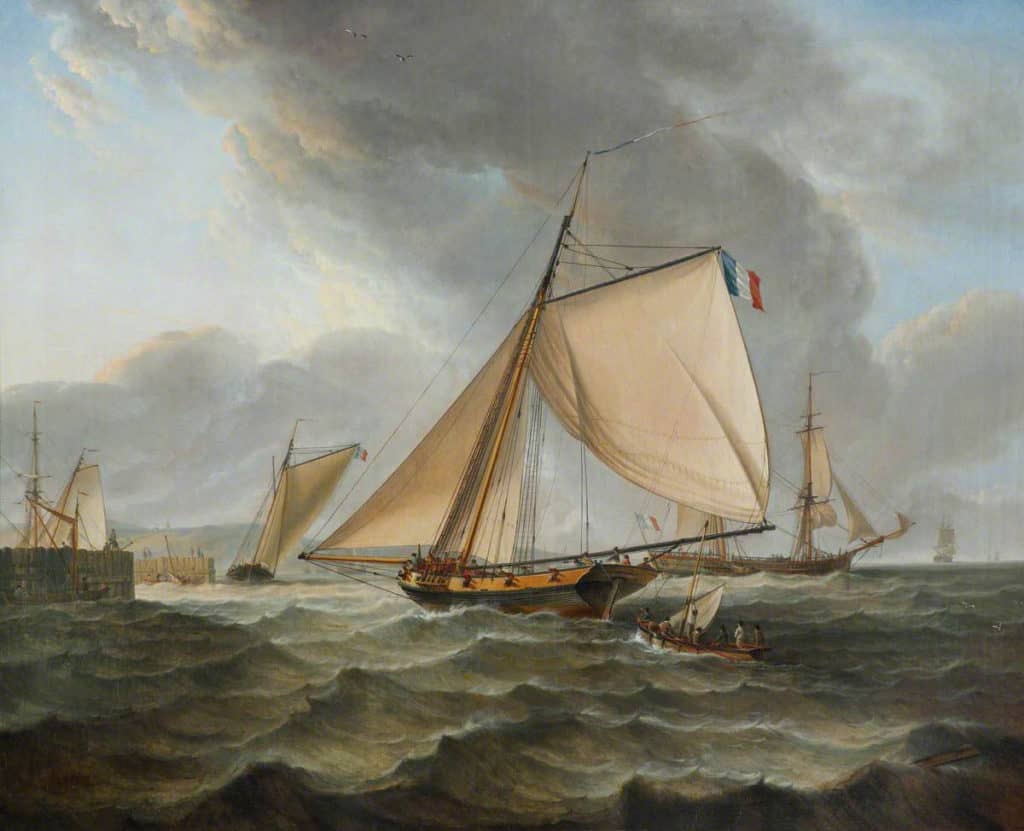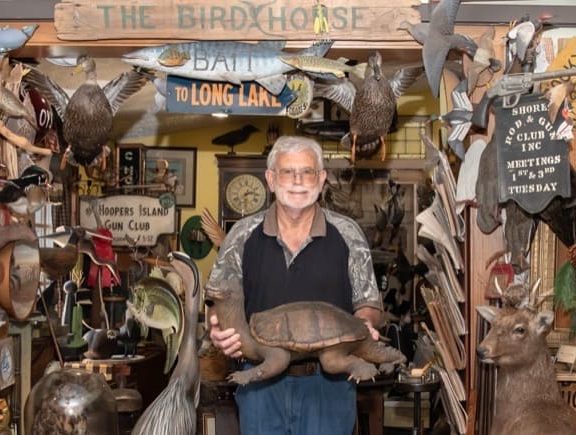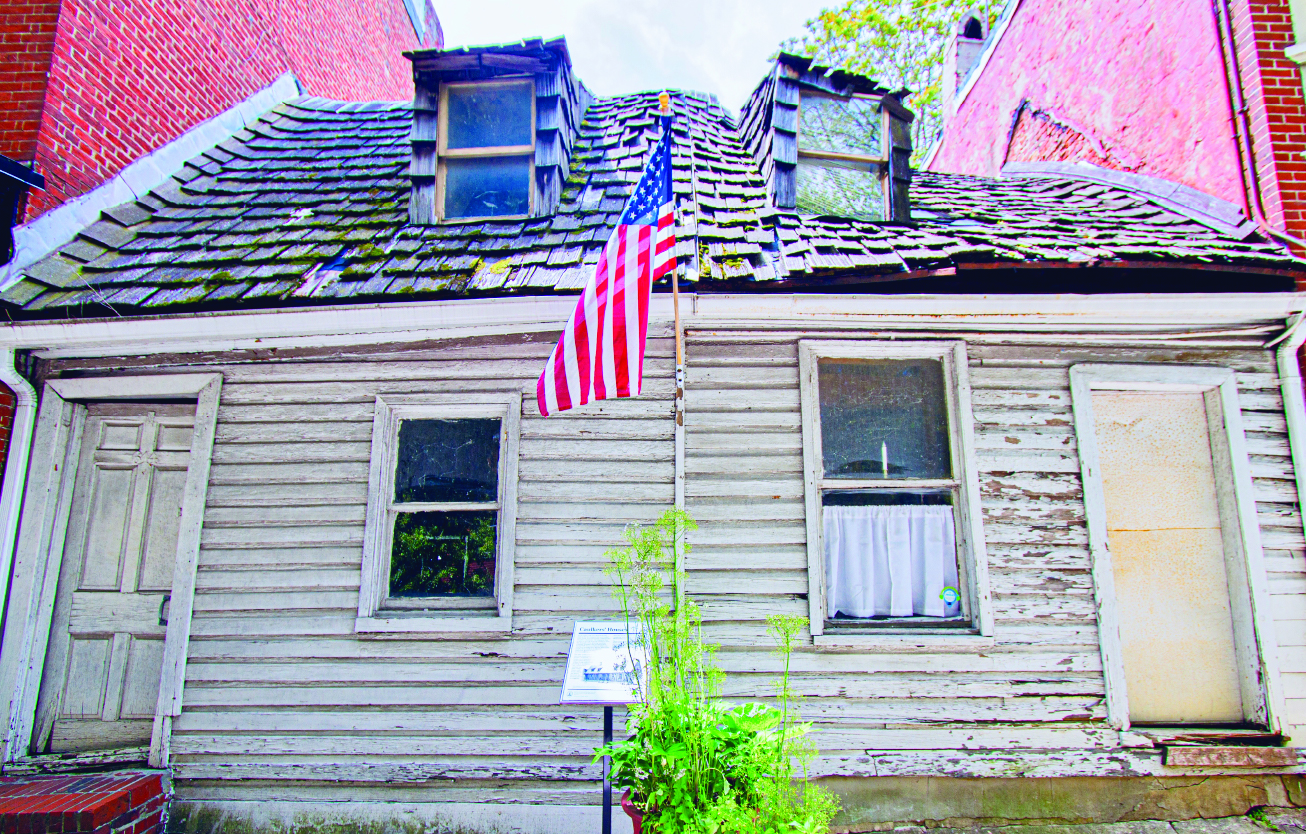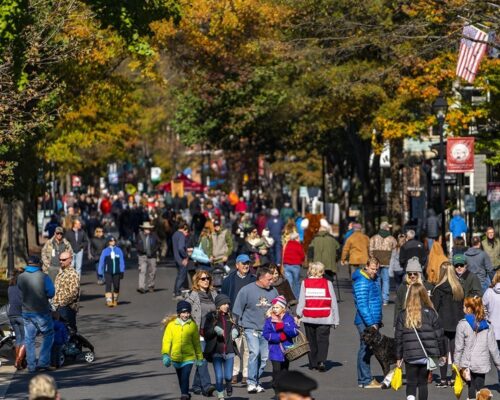New book looks at Chesapeake pirates
by Kristina Gaddy
Top Photo: Dominic Michael Serres’s depiction of the French cutter ‘La Paix’ entering a harbor on a port tack. Credit: National Maritime Museum
An outlaw of the ocean was terrorizing the Chesapeake Bay. Someone had spotted La Paix near Lynnhaven Bay in the spring of 1700, and that meant merchants were in danger.
The ironically named ship (it means The Peace in French) was captained by Louis Guittar, a Frenchman with a penchant for raiding and stealing. The Bay had been a commercial hub of the British colonies for decades, with ships coming and going from Africa, the Caribbean, Europe, and other ports in North America. Guittar arrived with his crew of 150 men to take advantage of this trade, seizing at least three vessels in a week, according to Jamie L.H. Goodall’s Pirates of the Chesapeake Bay: From the Colonial Era to the Oyster Wars.
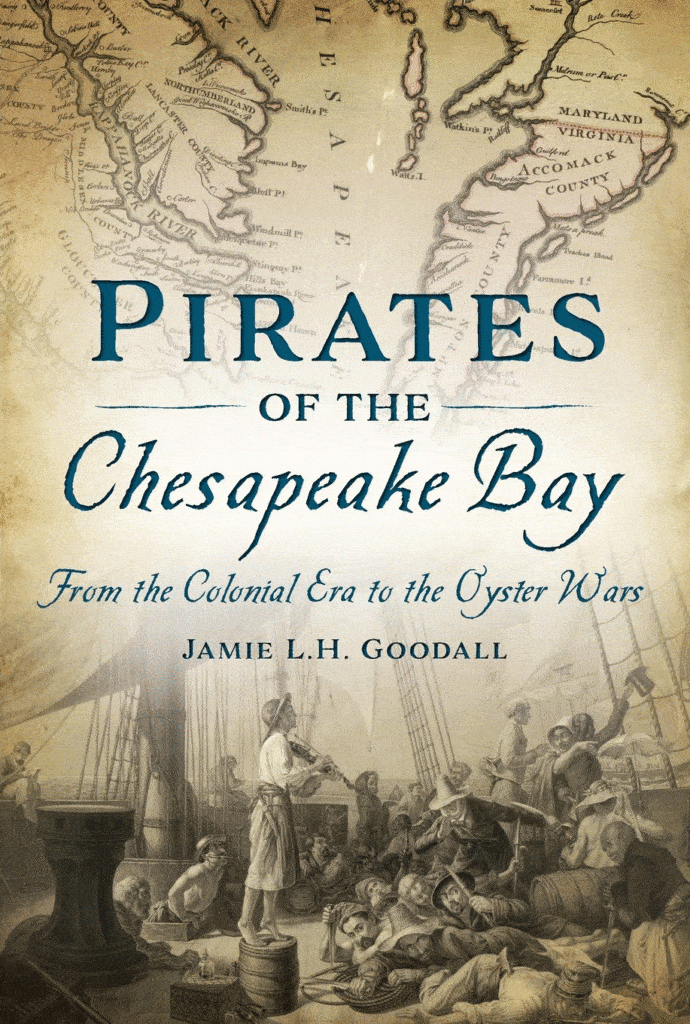
Guittar is one of Goodall’s favorite pirates covered in her new book. “He had a very prolific, but short, career,” she says. He’s also what a reader might imagine when they envision a pirate: a gutsy Frenchman of colonial times, boarding and plundering ships, taking men captive, stealing sails and rigging, and even burning boats when his crew felt so inclined.
Governor Francis Nicholson of Virginia, who did not share Goodall’s opinion, quickly dispatched military vessels to capture Guittar and 124 pirates. A 12-hour battle raged before Guittar finally surrendered. Nicholson sent the pirates to England to be tried. “Guittar and 23 of his men were hanged” in a single day, Goodall writes, and left along the Thames River until their corpses turned black.
Goodall’s book is deeply researched, but in her personal life she lets go of the historical accuracy for a broader appreciation of pirates. She loves the Pirates of the Caribbean films for their historical inaccuracies, and you may see her wandering the Maryland Renaissance Festival as the ship’s scholar of the fictional Mare Nostrum, with an “over-the-top” costume that is “very much in the way of the fictional pirate.”
Goodall makes a point to highlight more than just the stereotypical image of swashbuckling pirates made famous by Robert Louis Stevenson (and later, Disney). While pirates in the Caribbean loom large in our imaginations, “I was surprised to find that not much had been written on pirates in the Chesapeake,” says Goodall, who wrote her Ph.D. thesis on piracy, illicit trade, and commercial networks in the colonial Atlantic world.
An editor at the History Press heard about her research and approached her about writing a book specifically about the Chesapeake Bay, since she was living in Maryland at the time. She notes there is a book about pirate history in the area (Pirates on the Chesapeake, by Donald Shomette), but it stops at 1807. “I wanted to take it further,” she says, noting that piracy and privateering extended through the War of 1812, the Civil War, and into the 20th century with the Oyster Wars. These were the truly untold stories of pirates of the Chesapeake. “We don’t talk about the Oyster Wars a lot when we talk about the Bay,” she says, but there were “almost 100 years of oyster pirating.”
Much of what Goodall shares in her book breaks the stereotypes of what it means to be a pirate. “You didn’t just wake up and decide you wanted to be a pirate,” she says. “You mutinied and became a pirate, or you were recruited, or forced into service.” Life aboard merchant and military vessels was rough, and piracy offered a way to make money.
She also points out that pirates were not the egalitarians we sometimes imagine. “We think of them as the underdogs fighting for freedom against ‘the man,’ but they operated very much under the capitalist culture.” This was especially true when it came to raiding slaving ships. While some would free enslaved captives, or offer them an opportunity to join the ship, others “treated them as a commodity, and would seize and sell them at the nearest port.”
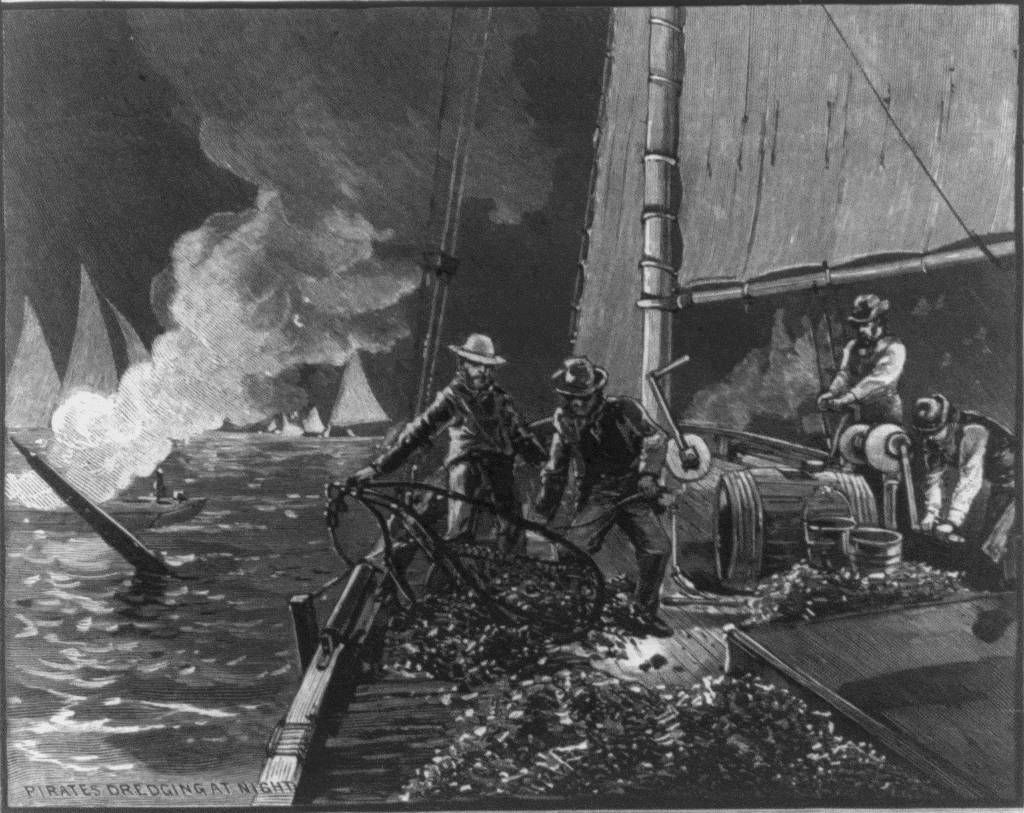
Another one of Goodall’s favorite stories comes from the Second Oyster War (1883-1884). Oyster harvesting had become a prominent and lucrative business on the Bay, providing fresh catch for local oyster houses and canneries that shipped oysters across the country. As it has during much of the Bay’s history, overfishing threatened the industry. Dredging was especially damaging to the supply of oysters, scooping up so many oysters that their natural reproductive cycles were damaged. Maryland and Virginia created licensing systems, rules to govern oystering, and even an Oyster Navy, which led to illicit trade, illegal harvesting, and oyster wars.
Like Governor Nicholson in 1700, Virginia Governor William E. Cameron did not appreciate illegality on his waters. After the First Oyster War in 1882, where he tried to stop illegal oystering, he tried again to stop another dredging fleet in 1883. He tried and tried to capture these oyster pirates with little success. When one crew spotted a possible vacant pirate ship, the Dancing Molly, off the shore, they thought they could easily capture it. “What they didn’t know was that the captain’s wife and two daughters were still on the ship,” Goodall explains, and all three were skilled seafarers.
As they heard the warning shots, the women sailed into Maryland waters for safety. Goodall was pleased to find some female pirates, who are mostly missing from history. “I find them incredibly brave.” The spectators that day also found the women brave, giving them three cheers for humiliating the Governor.
Kristina Gaddy writes about history and culture. Her nonfiction book Flowers in the Gutter came out in January.

